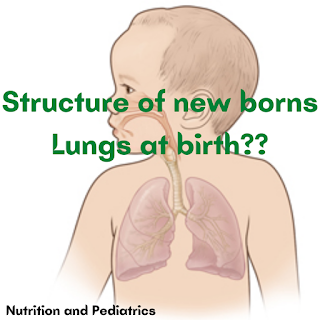How much delicate new born babies lungs at birth??
Researchers have captured the first detailed images of new born babies' lungs as they take their first breaths provides a breakthrough in understanding the events around a baby's first breath, why healthy infants cry upon entering the world and gives pieces of information to improving preterm children's endurance risks and long haul wellbeing results. About 10% of new born, and almost all preterm infants, need resuscitation because their lungs do not properly fill with air at birth. Researchers utilized bleeding edge innovation, electrical impedance tomography (EIT), where a little silk belt is set around the babies' chest to take profoundly point by point pictures profound into the lungs without meddling with parental contact or clinical consideration. This interaction permitted the group to create high goal pictures of how air was traveling through the lungs for every breath.
Respiratory problems are the most well-known explanation we need to treat children in
concentrated consideration. This new innovation not just permits us to see
profound into the lungs but on the other hand is the solitary technique we have
of constantly imaging the lungs without utilizing radiation or intruding on
life-saving consideration. Solid term infants utilize surprisingly complex
strategies for adjusting to air-breathing upon entering the world. There is a
motivation behind why guardians, birthing specialists and obstetricians are
satisfied to hear those first invigorating cries when an infant is conceived.
Crying is an interaction that rapidly ciculates air through the lung, which is
the reason 80% of all breaths following birth are cries.
Expiration is basically
significant during those first cries. Soon after birth the lung is still in
danger of imploding and the air-spaces can top off with liquid when an infant
is breathing out. Infants are amazingly sharp, as they inhale out after a cry
they move gas from very much circulated air through locales to those zones of the
lungs that are as yet loaded up with liquid forestalling breakdown. Children
will continue to do this until their lungs are securely loaded up with air and
afterward they can begin breathing normally.




Comments
Post a Comment